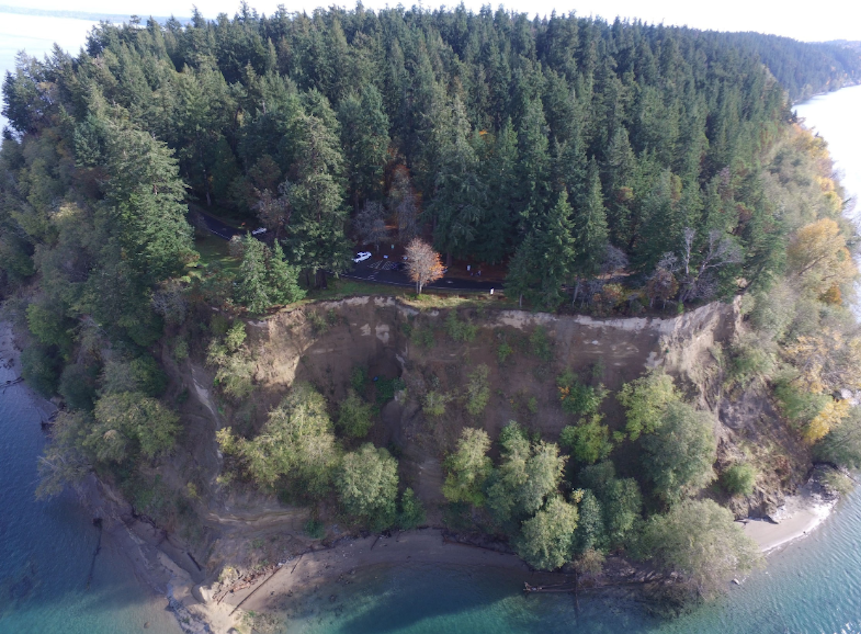Scenic Tacoma road permanently closed to cars. Blame climate change

Crumbling cliffs have led Metro Parks Tacoma to permanently close two miles of Five Mile Drive, a popular park road built atop the bluffs of Tacoma’s Point Defiance 109 years ago.
City officials are blaming climate change for the worsening erosion of a 150-foot-tall sea bluff that frames the Point Defiance peninsula as it juts into Puget Sound.
“Increasing stormwater, storm intensity at the top of the hill, and increasing wave energy and the dynamic of erosion at the toe of the slope, those are combining to accelerate the rate at which the bluff banks are receding,” Metro Parks Tacoma Deputy Planning Director Marty Stump said.
In places, the cliff edge has come within 20 feet of the recreational road built in 1913. The road will remain open to people on foot or bicycle.
“I have fond childhood memories of this drive and will miss occasionally riding my motorcycle through there,” Tacoma resident Jeromy Crom said on Twitter. “But being able to walk the dogs without concerns of idiots driving while distracted by raccoons is such a win.”
In January, the geotechnical consulting firm Geoengineers told Tacoma officials the consequences of continued erosion of Point Defiance Park's bluffs “could be severe.”
Sponsored
“As a result of wave action at the toe of the slope and erosion of exposed soils, the bluff will continue to experience surficial sloughing that propagates further inland towards Five Mile Drive and the Gig Harbor Viewpoint,” they reported.
The consultants said a retaining wall or other engineering measures to save the cliffside road would be very expensive and impractical. Instead, they recommended relocating it in the woods 150 feet back from the bluff.
Parks officials concluded that would require clearing too many trees from one of the nation’s largest forested city parks.
Metro Parks Tacoma is now looking into converting an existing service road that runs up the middle of the forest-covered peninsula to a publicly accessible road, though the agency has no funding for such a project.
Scientists say these sorts of decisions – to relocate or re-engineer threatened coastal infrastructure – will become more common around Puget Sound as the global climate warms and sea-level rise accelerates.
Sponsored
“Where we have things that we value on bluff tops — roads, houses, buildings, infrastructure, utilities — essentially your decision is: Pull that stuff back from the hazard zone or try to defend it in place,” Washington Sea Grant oceanographer Ian Miller said.
Miller said defensive measures against a rising sea are often very expensive and short-lived.
Sea level in Puget Sound has risen about eight inches since 1900. In Tacoma, it is likely to rise 8 to 10 inches by 2050 and 22 to 28 inches by the end of the century, according to the University of Washington Climate Impacts Group.
Storms are expected to grow more intense as the climate keeps heating up.
“High-intensity, short-duration rain events are an important driver of slope failure,” University of Washington climate scientist Guillaume Mauger said by email.
Sponsored
Point Defiance Park crews report seeing immediate changes to the bluffs following heavy spring rains.
How much the seas rise or storms intensify in coming years depends on how much heat-trapping pollution humanity keeps pumping into the atmosphere.
The outer two miles of Five Mile Drive close to motor vehicles on Friday.
Metro Parks Tacoma also announced that Owen Beach, another popular attraction at Point Defiance Park, is reopening after 16 months of renovations. Picnic areas, parking, and other features have been moved inland in anticipation of a rising Puget Sound eating away at the shoreline.




